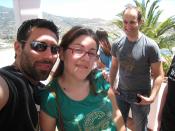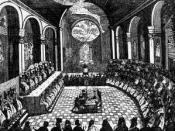The Renaissance was an age of glorious innovation and optimism. It provided many foundations on which our modern culture is built. In general, the word ÃÂRenaissance,ÃÂ the French word for ÃÂrebirth,ÃÂ is a useful and effective term to use in reference to the cultural revolution in Europe from 1400 to 1600, particularly since a central focus of the time was a return to classical philosophy; however, one weakness of the word is that is implies a total break from Medieval culture, and this can be especially problematic in art, since the Renaissance was as much a continuation of the old as it was something totally new.
Today, the main reason behind the continued use of ÃÂRenaissanceÃÂ is that it sums up the return to ancient Greek and Roman thought. At the center of this school of thought was humanism, essentially the study of manÃÂs nature and his possibilities. Petrarch and Erasmus, respectively known as the ÃÂfatherÃÂ and ÃÂprinceÃÂ of humanism, immersed themselves in the ancient Greek and Latin texts.
Desiderious Erasmus, departing from the popularity of the vernacular literature, even published Novum Instrumentum (the New Testament), a translation of the New Testament that was the first to juxtapose the Latin and Greek translations of the text. Throughout the Renaissance, many philosophers also held classical civilizations on a pedestal, stressing it as the paragon of enlightened thinking. This new concept became known as humanism, which combined with secularism and individualism, severely diminished the power and prestige of the Catholic Church. Gone was the medieval belief in enduring the toils of life in hopes of a happier life after death. This religious tone gave way to a basic concern with the material world and the potential for man to improve his life now.
Despite humanismÃÂs stress on individualism and Greek and Roman...


